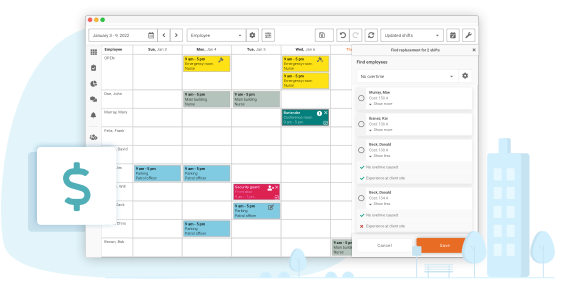When an employee works more than the standard hours in a week, they are entitled to overtime pay. Overtime pay is the additional compensation that employees receive for working more than the standard work hours. In this blog post, we will discuss how to calculate overtime pay.
What is Overtime Pay?

Overtime pay is additional compensation paid to an employee when they work beyond their regular work hours. The additional payment is often paid at a higher rate than the standard hourly pay rate. The overtime rate may vary depending on the company, industry, or location.
In most countries, including the U.S, employers are required to pay employees at least 1.5 times their regular pay rate for overtime work. This is known as “time-and-a-half” pay. Some employers may also offer double-time pay, which is two times the regular pay rate. It’s common for companies to offer time-and-a-half up to a certain number of hours. After that, double time kicks in. Either way, it’s important to understand how to calculate overtime.
WHEN IS OVERTIME PAY REQUIRED?
The requirement for overtime pay varies depending on the country, industry, or company. Most countries require employers to pay overtime to employees who work more than the standard hours in a week or day.
In the United States, the standard workweek is 40 hours, and the standard workday is 8 hours. An employee is entitled to overtime pay if they work more than 40 hours in a week or 8 hours in a day. Some states have different overtime requirements, so it’s important to check your state’s labor laws. You can check that here.
How to Calculate Overtime Pay
To calculate overtime pay, you need to determine the employee’s regular pay rate, the overtime rate, and the number of overtime hours worked.
STEP 1: DETERMINE THE REGULAR PAY RATE
The regular pay rate is the employee’s hourly rate of pay for their standard work hours. For example, if an employee’s hourly rate is $20 per hour, and their standard work hours are 8 hours per day, their regular pay rate is $20 per hour.
STEP 2: DETERMINE THE OVERTIME RATE
The overtime rate is the rate of pay that is 1.5 times the regular pay rate. For example, if an employee’s regular pay rate is $20 per hour, their overtime rate is $30 per hour ($20 x 1.5).
STEP 3: DETERMINE THE OVERTIME HOURS WORKED
Employees work overtime hours when they exceed the standard work hours. If an employee works 10 hours in a day, and their standard work hours are 8 hours, they worked 2 hours of overtime.
STEP 4: CALCULATE THE OVERTIME PAY
To calculate the overtime pay, multiply the overtime hours worked by the overtime rate. For example, if an employee’s overtime rate is $30 per hour, and they worked 2 hours of overtime, their overtime pay is $60 ($30 x 2).
Example Calculation

Let’s say an employee’s regular pay rate is $20 per hour, and their overtime rate is $30 per hour. If they worked 50 hours in a week, 10 of which were overtime hours, their overtime pay would be calculated as follows:
Regular pay: 40 hours x $20 per hour = $800. Overtime pay: 10 hours x $30 per hour = $300. Total pay: $800 + $300 = $1,100
In this example, the employee’s total pay for the week is $1,100, which includes their regular pay and overtime pay.
Calculating overtime pay is an important part of ensuring that employees are paid fairly for their work. To calculate overtime pay, you need to determine the regular pay rate, the overtime rate, and the number of overtime hours worked. By following these steps, you can ensure that your employees receive the proper compensation for their overtime work.
Can Employee Scheduling Software help?
As you can imagine, going through the steps above for 100 employees might be very time consuming. However, if you use Employee Scheduling Software, you could save up to 95% of your time! Employee scheduling software like Celayix can help employers calculate and pay overtime pay in several ways:

- Automated Overtime Calculations: The software can automatically calculate overtime based on pre-set rules and policies. This can include calculating overtime based on weekly hours, daily hours, or other custom criteria.
- Real-Time Tracking of Hours Worked: The software can track employee work hours in real-time, making it easy to determine when an employee has exceeded their regular hours and is eligible for overtime pay.
- Automatic Generation of Reports: The software can generate reports that provide employers with an overview of how many overtime hours have been worked by each employee and the associated cost. This can help employers stay on top of their overtime obligations and avoid costly errors.
- Integration with Payroll: The software can integrate with payroll systems, automatically calculating overtime pay and incorporating it into employee paychecks.
By streamlining the overtime calculation process, employee scheduling software like Celayix can help employers reduce errors, save time, and ensure compliance with overtime regulations. If you’d like to learn more about how Celayix can help you manage overtime, sign up for a free live demo today!




